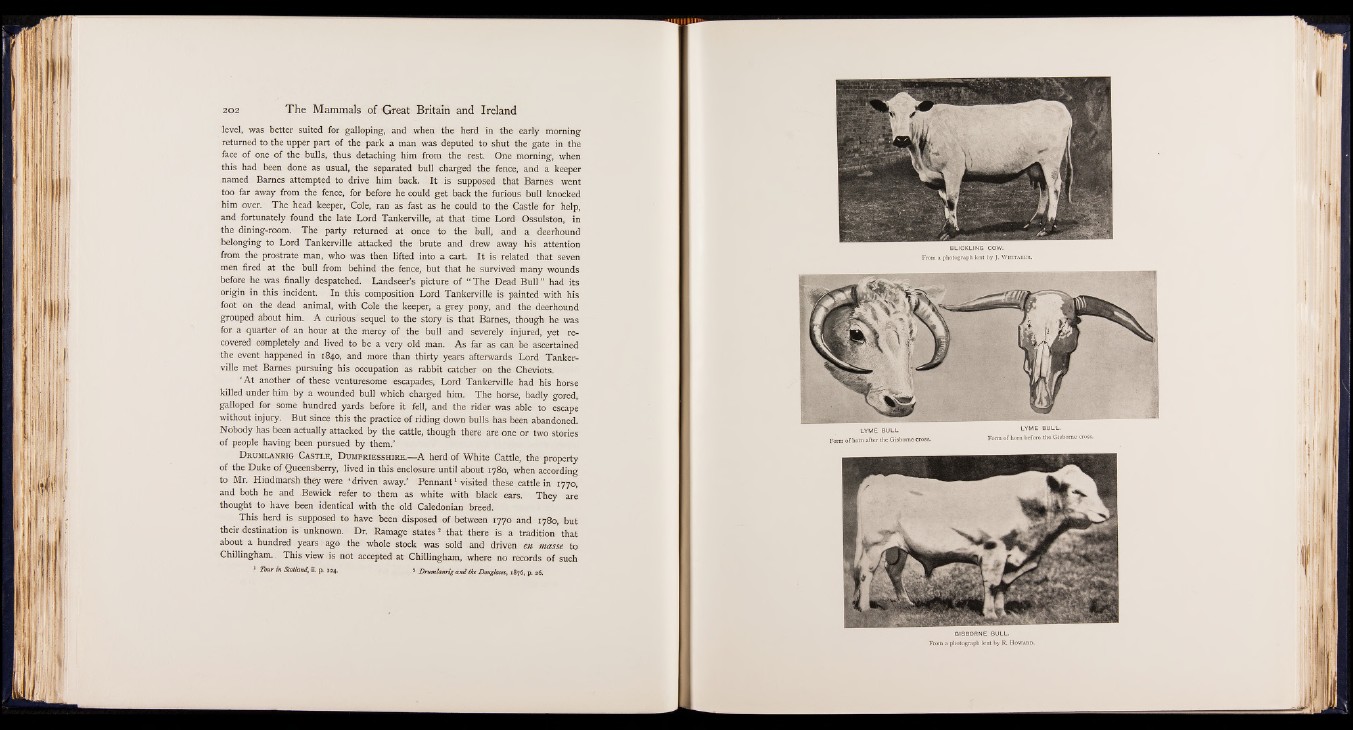
level, was better suited for galloping, and when the herd in the early morning
returned to the upper part of the park a man was deputed to shut the gate in the
face of one of the bulls, thus detaching him from the rest. One morning, when
this had been done as usual, the separated bull charged the fence, and a keeper
named Barnes attempted to drive him back. It is supposed that Barnes went
too far away from the fence, for before he could get back the furious bull knocked
him over. The head keeper, Cole, ran as fast as he could to the Castle for help,
and fortunately found the late Lord Tankerville, at that time Lord Ossulston, in
the dining-room. The party returned at once to the bull, and a deerhound
belonging to Lord Tankerville attacked the brute and drew away his attention
from the prostrate man, who was then lifted into a cart. It is related that seven
men fired at the bull from behind the fence, but that he survived many wounds
before he was finally despatched. Landseer’s picture of “ The Dead Bull” had its
origin in this incident. In this composition Lord Tankerville is painted with his
foot on the dead animal, with Cole the keeper, a grey pony, and the deerhound
grouped about him. A curious sequel to the story is that Barnes, though he was
for a quarter of an hour at the mercy of the bull and severely injured, yet recovered
completely and lived to be a very old man. As far as can be ascertained
the event happened in 1840, and more than thirty years afterwards Lord Tankerville
met Barnes pursuing his occupation as rabbit catcher on the Cheviots.
‘ At another of these venturesome escapades, Lord Tankerville had his horse
killed under him by a wounded bull which charged him. The horse, badly gored,
galloped for some hundred yards before it fell, and the rider was able to escape
without injury. But since this the practice of riding down bulls has been abandoned.
Nobody has been actually attacked by the cattle, though there are one or two stories
of people having been pursued by them.’
D r u m l a n r i g C a s t l e , D u m f r i e s s h i r e .— A herd of White Cattle, the property
of the Duke of Queensberry, lived in this enclosure until about 1780, when according
to Mr. Hindmarsh they were ‘ driven away.’ Pennant1 visited these cattle in 1770,
and both he and Bewick refer to them as white with black ears. They are
thought to have been identical with the old Caledonian breed.
This herd is supposed to have been disposed of between 1770 and 1780, but
their destination is unknown. Dr. Ramage states2 that there is a tradition that
about a hundred years ago the whole stock was sold and driven en masse to
Chillingham. This view is not accepted at Chillingham, where no records of such
1 Tour in Scotland, ii. p. 124. * Drumlanrig and the Douglases, 1876, p. 26.
BUCKLING COW.
From a photograph lent by J. Whitaker.